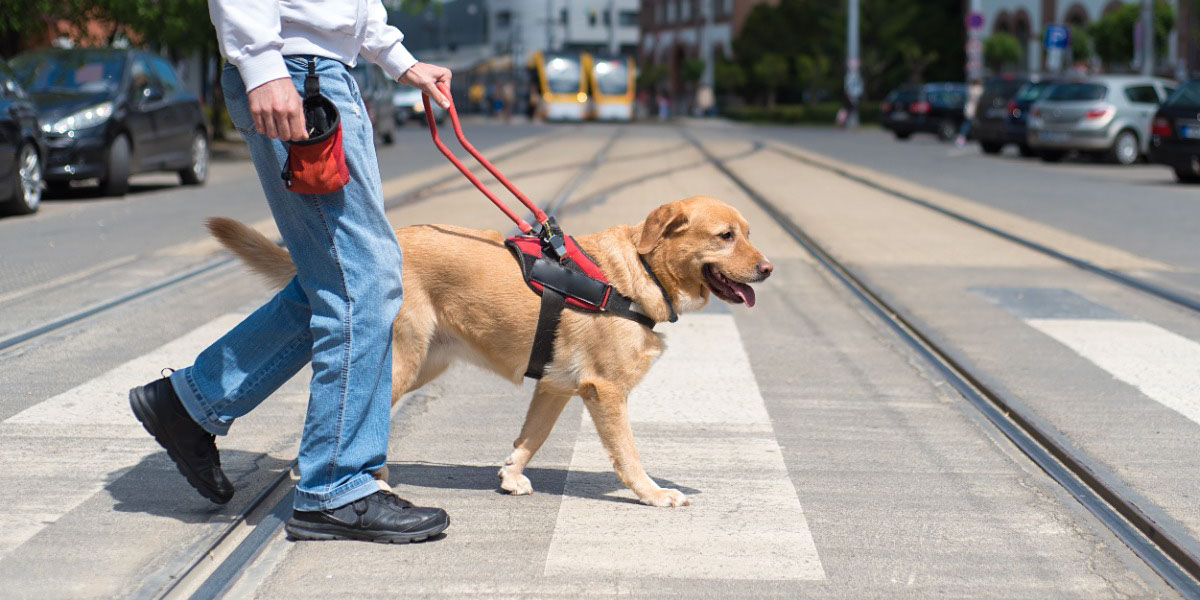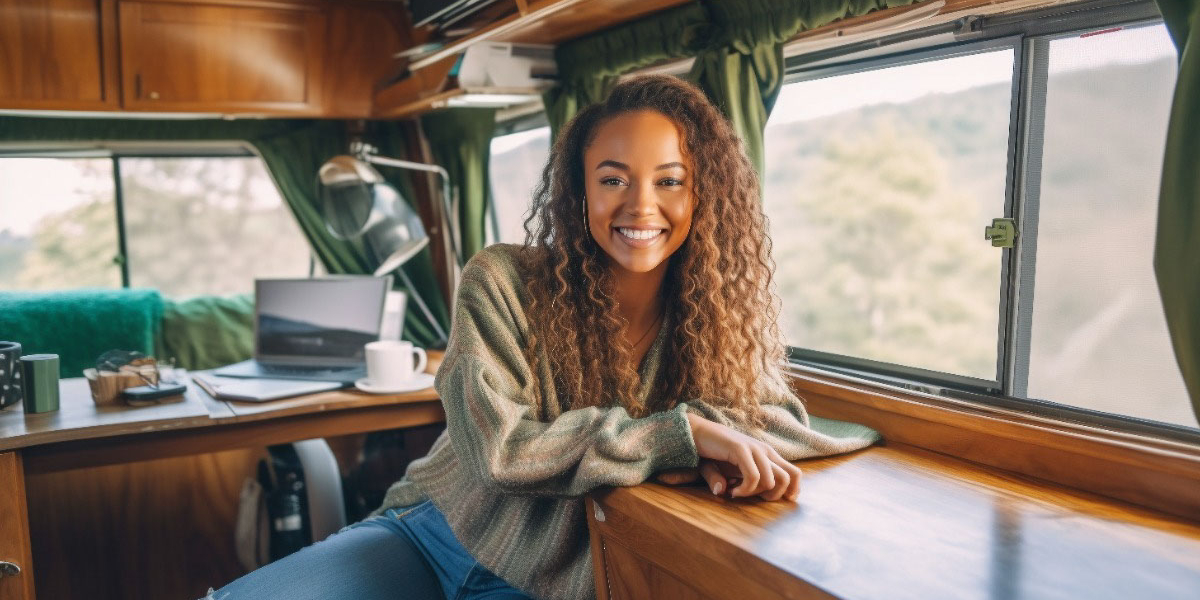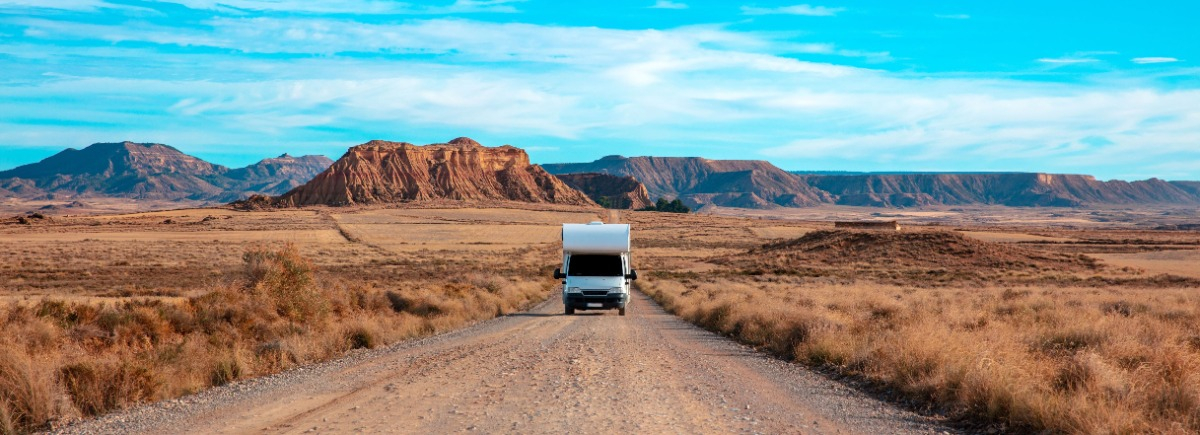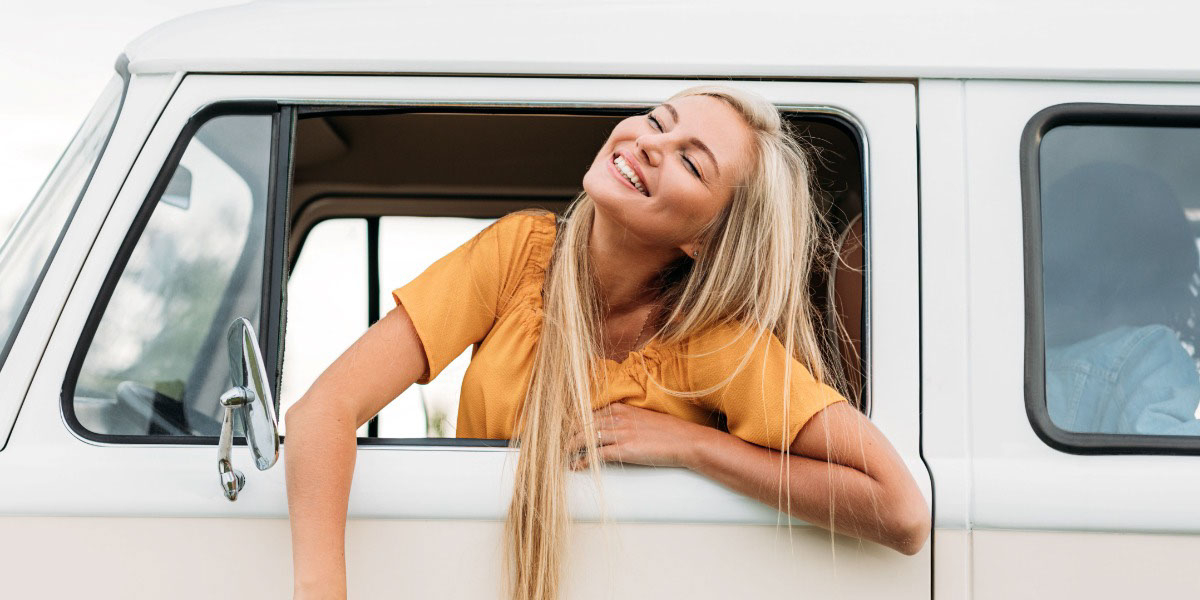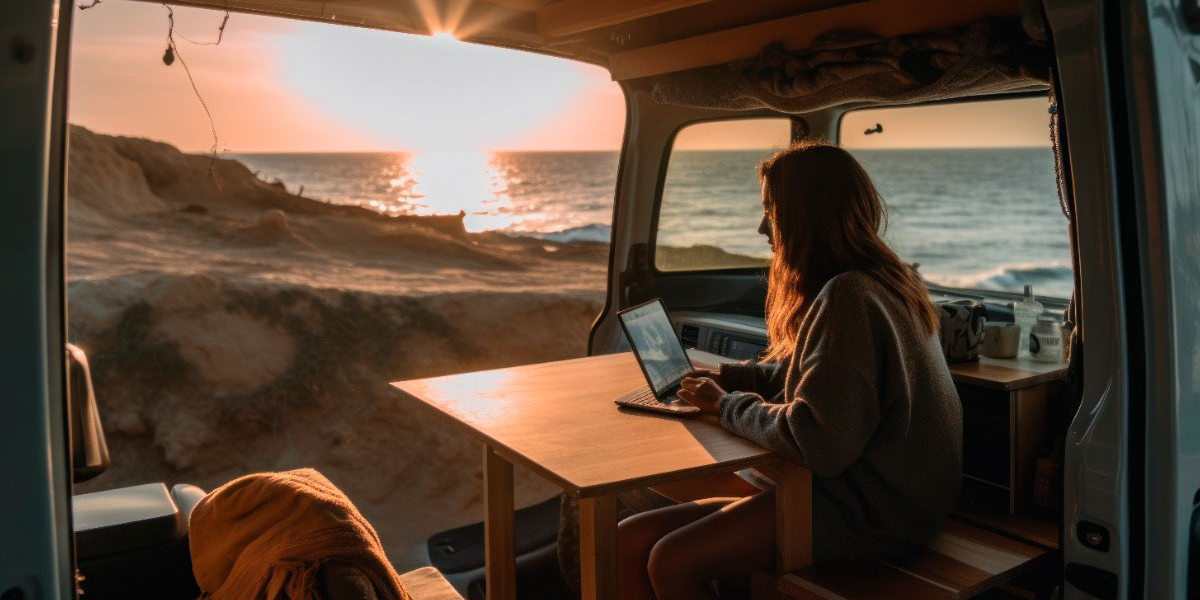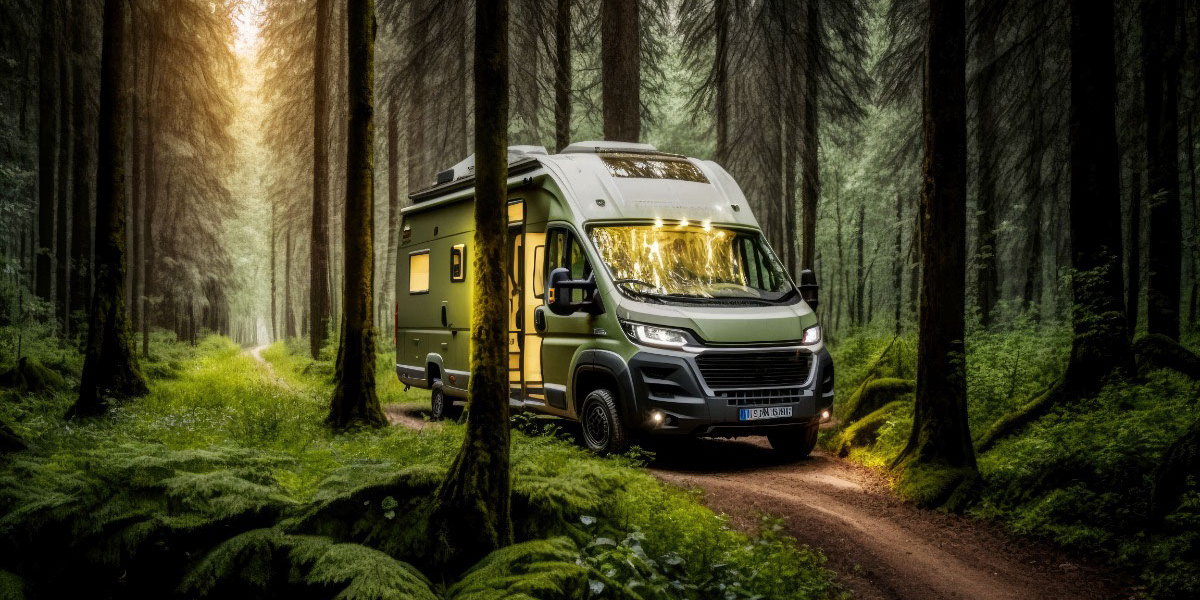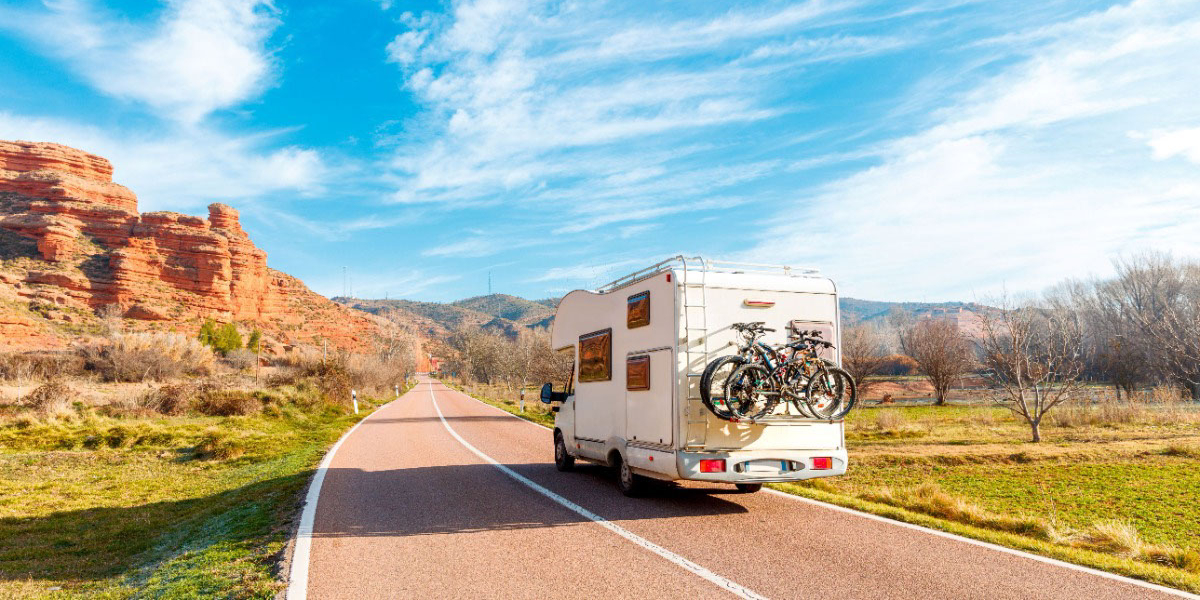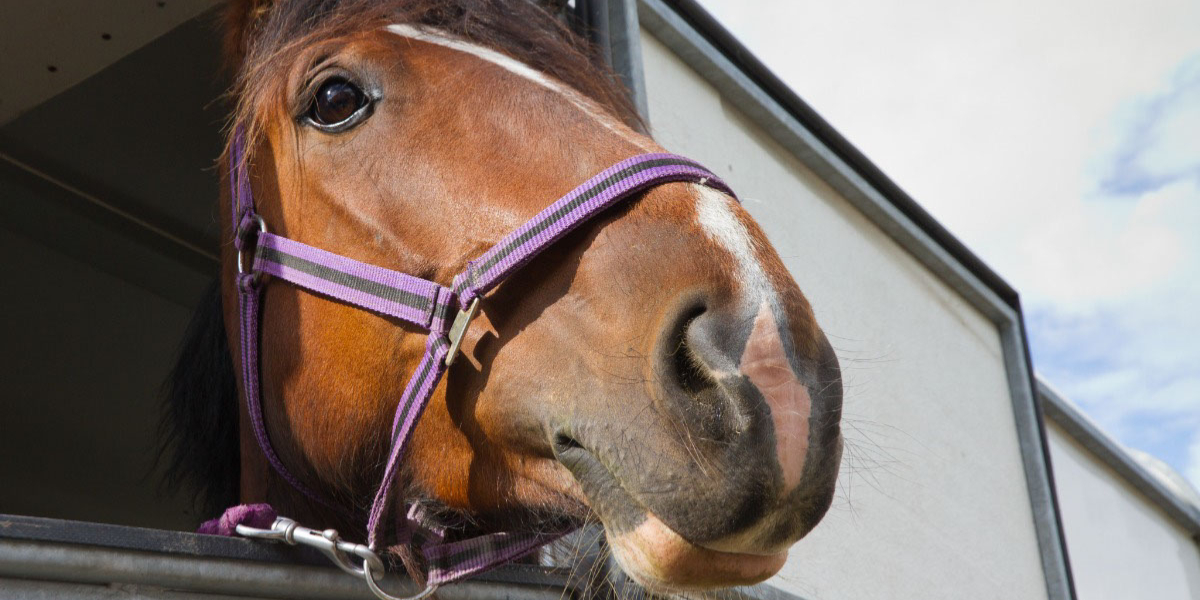Heading out on an adventure in your RV can be an incredible experience, but when you’re traveling with a service dog, it requires some additional thought and preparation. Whether you’re a seasoned RVer or a first-timer on the road, these tips will help ensure a smooth and enjoyable journey for both you and your faithful companion.
First, what exactly is a service dog? These reliable canines are specially trained to help people with disabilities. They can perform helpful and sometimes life-saving tasks, such as picking things up, opening doors, helping to balance their owner, and alerting their owner if a medical crisis is impending. Because of the Americans with Disabilities Act (ADA), service dogs must be allowed in all public places. This can give you peace of mind when you’re traveling around the country with your service dog in your RV. It’s important to note that service dogs differ from emotional support animals (ESAs). ESAs provide valuable emotional support and companionship, but they are not trained to perform tasks.
From planning and preparation to ensuring comfort and safety, RV Trader is sharing nine essential guidelines that will help make your RV trip a resounding success for you and your service dog.
1. Understand Laws and Regulations
If someone asks you about your disability while you’re on the road, at a rest stop, or exploring a national park, you’re not obligated to answer. The only two questions people can legally ask you are if your dog is a service dog because of a disability and what tasks they’ve been trained to perform. There isn’t any official documentation or identification that your service dog needs, though wearing a “Service Dog” vest will probably make your life easier and help navigate questions that people might have.
2. Pre-Trip Preparation
Before hitting the road, spend some time preparing your service dog for your upcoming RV adventure. Ensure your dog’s vaccinations are up-to-date, and bring along copies of their medical records. If your dog takes medication, bring a decent supply along. Additionally, make sure your service dog has an updated tag with their name, your contact information, and their service dog status.
As far as paperwork, consider asking your doctor for a letter detailing your need for a service dog. While not legally required, this tends to make travel easier. You may also want to bring a copy of the ADA service dog regulations, a list of your medications and allergies, and a copy of your pet insurance policy. If you have any documentation entailing your service dog’s training, bring that along, too.
3. Familiarize Your Dog with the RV
Introduce your service dog to your Class B RV or other RV gradually, allowing them to become comfortable with the new environment. Ideally, this should take place over a few weeks. Start by allowing them to explore the RV while it’s parked, and gradually transition to short drives to acclimate them to the movement and sounds of the vehicle. Over time and with a bit of patience, your service dog should feel comfortable in your camper.
4. Secure Accommodations Early
Even if they aren’t technically “pet-friendly”, campgrounds and RV parks should welcome service dogs. It’s always safest to give them a call before you arrive, though. Contact the campsites you’d like to visit in advance to inquire about their policies and any specific amenities they offer for dogs, such as enclosed dog parks or designated dog walking areas. In addition, give them a heads up that you’ll be visiting with your service dog. That way, you won’t catch them off guard when you get there. It shouldn’t be a big deal, but transparency will likely make your RV adventure less stressful.
5. Maintain a Consistent Routine
Dogs thrive on routine, so try to maintain a regular schedule during your RV trip. Stick to established feeding times, exercise routines, and bathroom breaks to help your service dog feel secure and reduce stress. Traveling via travel trailer or another RV makes this step a lot easier than traveling via airplane, where early flights and long waits in the airport can throw your dog’s schedule off significantly.
6. Keep Your Service Dog Safe
While traveling in an RV, it’s crucial to keep your service dog safe and secure. Consider using a well-fitted harness or a crate to prevent them from moving around the vehicle unsafely. This not only protects your dog but also ensures your own safety while driving. If you prefer to keep your service dog in the front seat next to you, use a harness that clips to the seatbelt. This way, if you have to slam on your brakes in case of an emergency, your dog won’t go flying into the dashboard, or worse. You never know when something unexpected is going to happen on the road, so it’s smart to take precautions.
7. Pack Essential Supplies
Pack a bag with your service dog’s essential items, including food, water, treats, bowls, toys, bedding, a leash, and any other items necessary for their care and comfort. This ensures that you have everything your dog needs, even if it’s not readily available at your destination.
You may be tempted to provide food and water to your service dog while you’re moving, but it’s best to wait until you’re stopped. Eating on the road is a choking hazard, and any water you put out will likely spill all over the place.
8. Regular Exercise and Mental Stimulation
Keep your service dog active and mentally stimulated during your RV journey with interactive toys and games. Plan stops along your route to allow for regular exercise, walks, and playtime. This not only helps to release energy but also promotes a healthier and happier travel experience for your furry companion.
9. Keep a Comfortable Temperature
Extreme temperatures can pose serious risks to your service dog’s health. In hot weather, ensure that your RV is properly ventilated and air-conditioned, and never leave your dog unattended in a parked vehicle. If you have a large motorhome, be conscientious of the temperature variation from the front of your RV to the back of your RV. You might feel cool and comfortable with the AC blasting in the front seat, but if your service dog is secured in a crate near the back of your camper, the temperature might be very different. Similarly, in colder climates, provide warm bedding and protect your dog from freezing temperatures.
RVing with a service dog can be a gratifying and enjoyable experience if you take the necessary precautions and plan ahead. By following these tips, you can ensure the comfort, safety, and well-being of your faithful companion throughout your RV journey. With careful preparation, you’ll be able to create unforgettable memories with your service dog on the road.
If you’re ready to invest in an RV for your next trip, browse our nationwide inventory of new and used vehicles at RVTrader.com.
